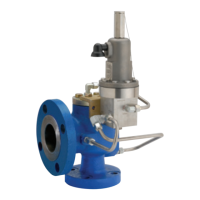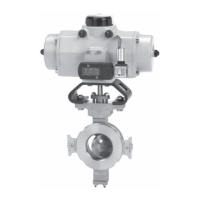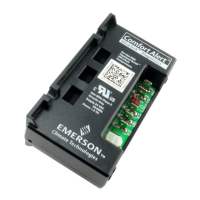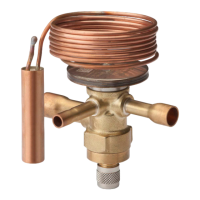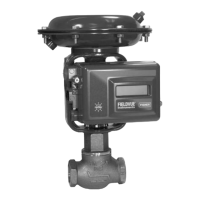5
4.4 Adjustment tolerances
If the Type 81P liquid valve is not marked with the UV code stamp and if a water source is
not available valves with set pressures greater than 750psi (51.7barg) may be set on air
by adjusting the spring to obtain first crack at 95% of set pressure. The valve should not be
popped on air as this may damage the seat. For set pressures below 750psi (51.7barg), the
81P should only be set pressure adjusted using the water method above.
Note: valves with relief capacity in GPM must be set using water if the valve will bear the 'VR'
repair symbol stamp.
Type 81P air valves shall be set using an accumulator large enough to accurately measure
set pressure. Turn the spring adjustment screw on bonnet in most of the way. Increase
pressure to desired level and back out screw until valve pops. Lock screw with jam nut and
retest. Readjust as required.
Set pressure range Valve operating characteristics Tolerance or limit
Above 70psig (4.8barg) Set pressure ± 3% of nameplate set
70psig (4.8barg) and below Set pressure ± 2psig
100psig (6.9barg) and above Cracking pressure 92½% of nameplate set
50psig (3.4barg) to 99psig (6.8barg) Cracking pressure 80% of nameplate set
5 SEAT LEAKAGE
5.1 If the valve leaks after repair, check for the following:
5.1.1 Full and even seating of nozzle and guide.
5.1.2 Foreign particles trapped between the seat and nozzle. If any are found they may have
damaged the seat making it necessary to replace it.
5.1.3 Correct seat material for the valve set pressure. If item 1 and 2 reveal no evident seat
leakage source, the procedures described in section 5.2. may be used to eliminate seat
leakage. Section 5.2 applies only to PTFE seated -4 or -8 orifice type 81P with nameplate
set pressures that do not exceed 250 psig (1724 kPag).
5.2 Seat sealing procedures
Heat the valve for 15 to 30 minutes in an oven preheated to 250-265°F (121-129°C). A concentrated
heat source such as a heat gun or open flame must not be used. After the valve has air-cooled to
room temperature, retest per section 4 to ensure seat tightness. If results have not improved, the
valve should be disassembled and the seat replaced.
ANDERSON GREENWOOD TYPE 81P DSO PRESSURE RELIEF VALVES
MAINTENANCE INSTRUCTIONS
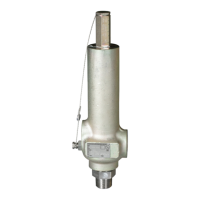
